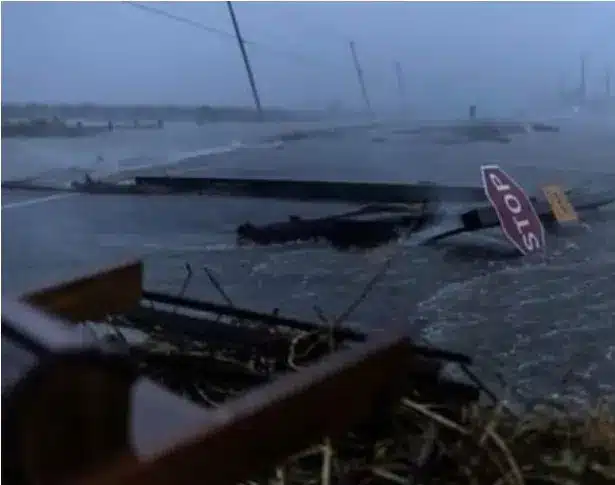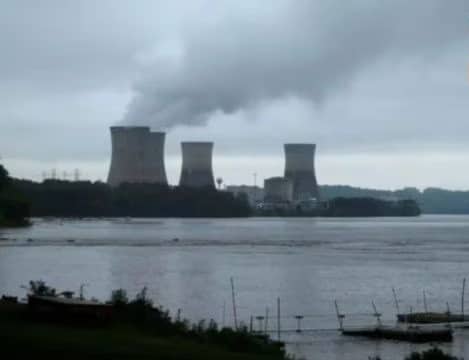What’s in today’s article?
- Why in News?
- What is a Hurricane?
- What are the key characteristics of hurricanes?
- Beryl’s record early intensification
- Why did Beryl become a Category 5 hurricane so early?
Why in News?
Hurricane Beryl became the earliest storm on record during the Atlantic hurricane season to have reached the highest Category 5 classification.
Earlier this month, it devastated the Caribbean islands, causing intense floods and dangerous winds in Jamaica, Grenada, Saint Vincent and the Grenadines, and northern Venezuela, resulting in at least 11 deaths.
On July 8, Beryl made landfall in Texas as a Category 1 storm, flooding streets and causing power outages for over two million people in the state.
What is a Hurricane?
- A hurricane is a powerful and destructive tropical storm characterized by strong winds, heavy rainfall, and low atmospheric pressure.
- Hurricanes are also known as cyclones or typhoons in different parts of the world; the term used depends on the region.
- In the Atlantic Ocean and eastern North Pacific, they are called hurricanes, while in the northwestern Pacific, they are referred to as typhoons, and in the South Pacific and Indian Ocean, they are known as cyclones.
What are the key characteristics of hurricanes?
- Low Pressure Centre
- Hurricanes have a well-defined centre of low atmospheric pressure, known as the eye.
- The eye is typically calm and clear, with light winds, surrounded by a ring of intense thunderstorms called the eyewall.
- Strong Winds
- Hurricanes are known for their powerful winds that can reach sustained speeds of at least 74 miles per hour (119 kilometers per hour) or higher.
- Heavy Rainfall
- Hurricanes produce heavy rainfall, which can lead to flooding, landslides, and storm surges (a rise in sea level along the coast caused by the hurricane’s winds pushing water toward the shore).
- Formation
- Hurricanes form over warm ocean waters when the sea surface temperature is typically above 26 degrees Celsius (79 degrees Fahrenheit).
- Warm, moist air rises from the ocean’s surface, creating an area of low pressure.
- As the air cools and condenses, it releases heat, which fuels the storm’s development.
- Categories
- Hurricanes are categorized on the Saffir-Simpson Hurricane Wind Scale based on their maximum sustained wind speeds.
- The scale ranges from Category 1 (weakest) to Category 5 (strongest), with each category representing a higher wind speed and potential for damage.
- Category 1 hurricanes bring winds of 119 to 153 kmph, Category 5 hurricanes, which are the strongest, have winds of 252 kmph or higher.
- Storms that reach Category 3 and higher are considered major hurricanes due to their potential to inflict significant damage.
Beryl’s record early intensification
- Within 24 hours of emerging as a tropical depression with winds of 56.3 kmph on June 28, Beryl transformed into a hurricane.
- Over the next 24 hours, it rapidly intensified to become a Category 4 hurricane.
- At that point, Beryl was the first Category 4 hurricane to form in June.
- The earliest emergence of a Category 4 hurricane was previously seen in the case of Hurricane Dennis in July 2005.
- On July 1, Beryl made landfall on Grenada’s Carriacou Island as a Category 4 hurricane with sustained winds of over 241 kmph.
- As it travelled through the Caribbean Sea, it continued to gain strength, and became a Category 5 hurricane on July 2.
- This made it the earliest Category 5 hurricane seen during the Atlantic hurricane season on record.
- Beryl was also the strongest July Atlantic hurricane on record, with winds of 265.5 kmph, according to NOAA.
Why did Beryl become a Category 5 hurricane so early?
- The Atlantic hurricane season, lasting from June to November, typically sees its first major hurricanes in September due to the gradual warming of ocean waters, according to NOAA.
- Hurricane Beryl is unprecedented because it formed as a powerful storm much earlier, attributed to unusually warm ocean temperatures.
- Since 2023, both sea surface temperatures and ocean heat content (OHC) have been at record highs, a trend reflected in this year’s OHC being significantly above the 2013-2023 average.
- Atmospheric scientists highlight that the depth of the warm water, extending 100 to 125 meters, prevents cooler water from surfacing, thus sustaining Beryl’s intensity.
Q.1. What is ocean heat content (OHC)?
Ocean heat content (OHC) is the measure of heat stored in the ocean, encompassing temperature data from the surface to deeper layers. It reflects the ocean’s role in absorbing and storing heat, influencing climate and weather patterns.
Q.2. What is Saffir-Simpson Hurricane Wind Scale?
The Saffir-Simpson Hurricane Wind Scale classifies hurricanes into five categories based on their maximum sustained wind speeds. Ranging from Category 1 (least severe) to Category 5 (most severe), it estimates potential property damage and flooding caused by hurricanes.
Source: How climate change fuelled Hurricane Beryl’s record early intensification | Economic Times | CBS News
Last updated on December, 2025
→ Check out the latest UPSC Syllabus 2026 here.
→ Join Vajiram & Ravi’s Interview Guidance Programme for expert help to crack your final UPSC stage.
→ UPSC Mains Result 2025 is now out.
→ UPSC Notification 2026 is scheduled to be released on January 14, 2026.
→ UPSC Calendar 2026 is released on 15th May, 2025.
→ The UPSC Vacancy 2025 were released 1129, out of which 979 were for UPSC CSE and remaining 150 are for UPSC IFoS.
→ UPSC Prelims 2026 will be conducted on 24th May, 2026 & UPSC Mains 2026 will be conducted on 21st August 2026.
→ The UPSC Selection Process is of 3 stages-Prelims, Mains and Interview.
→ UPSC Result 2024 is released with latest UPSC Marksheet 2024. Check Now!
→ UPSC Prelims Result 2025 is out now for the CSE held on 25 May 2025.
→ UPSC Toppers List 2024 is released now. Shakti Dubey is UPSC AIR 1 2024 Topper.
→ UPSC Prelims Question Paper 2025 and Unofficial Prelims Answer Key 2025 are available now.
→ UPSC Mains Question Paper 2025 is out for Essay, GS 1, 2, 3 & GS 4.
→ UPSC Mains Indian Language Question Paper 2025 is now out.
→ UPSC Mains Optional Question Paper 2025 is now out.
→ Also check Best IAS Coaching in Delhi

















